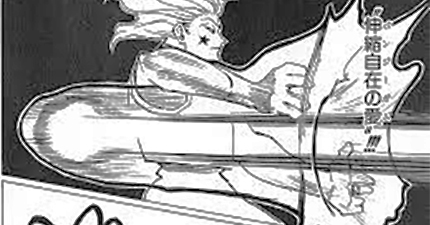To say that the movie Black Swan by Darren Aronofsky stole from the anime Perfect Blue by Satashi Kon simply because Aronofsky owns the remake rights to Perfect Blue, copied some of the shots of Perfect Blue in both Black Swan and Requiem for a Dream, but denied that Black Swan is inspired by Perfect Blue would be a misinterpretation of events.
Pop culture Asia, which is a term that Chua Beng Huat uses to describe a fictive and fragmented sense of togetherness or collusion that transnational and transcultural media generates, includes Japanese animation, Hong Kong cinema, Taiwanese pop rock, Korean pop, Vietnamese pop, Thai dramas, and mainland talk shows. The figures that live within pop culture Asia are viewed as inhabiting the same world even when they lack common culture or language. Members of TVXQ perform with Andy Lau on stage. K-pop stores and styles flourish within Thailand’s lesbian scene. The manga Boys over Flowers was made into dramas in Taiwan, Korea, mainland China, and Thailand. The reason why these pop products are so culturally flexible is because they’re not made for a national market but in the context of pop culture Asia.
Pop culture Asia is also mimetic. Different parts of pop culture Asia imitate other parts and reinterpret established brands as materials that are then remade into something new. Most of our technology products that we might access these pop products through are made in Asia. Japanese industrialists first outsourced their production to Taiwan and Korea. Today, most phones are made in China and India.
However, these technology products never have an aura of appearing Asian even though most of them are made by Asians in Asia. This is because, to make these products more appealing for a western market, Japanese industrialists sought to hide what Koichi Iwabuchi calls their cultural odor. Later on, the production of the parts of these technology products became modularized by Taiwan industrialists. This means that, like pop culture Asia, the technology we use to consume media inhabits a fragmented but colluding world.
Pop culture Asia adopts similar strategies in media. Early creators of anime were inspired by traditional Japanese illustration and Disney. Korean and Vietnamese bars and brothels played all kinds of American music genres and, in doing so, created a syncretic sound. Cantopop, too, learned to use western melodies and instruments in synchronization with Asian ones. Again, most of these products are made for cultural export. They’re not intended to only be enjoyed by a national audience.
When American directors are influenced by pop culture Asia, is it truer to say that they stole ideas or that they have learned to participate in the mimetic movements of a shared transcultural empire? When American directors learn to copy from anime, aren’t they just copying not from the real “Asia” whatever that is but from the learned mirror that reflects American forms back to itself?
When BTS remakes Black Swan, they remake Black Swan. They don’t remake Perfect Blue. The song Black Swan is about a dancer’s first death which is the moment when they must stop dancing. The aesthetics of the music video for Black Swan are gilded and old European looking. In fact, it is filmed at the Los Angeles Theater and the styles are imitative of an European aristocratic sensibility.
BTS are idols. Idol culture is an Asian art form. Idol culture began in Japan as a kind of theater enterprise. It still has heavily dramatized looks and idols are expected to perform not authenticity but persona. The idol culture in Korea uses some of the same audition venues that the US military used to use when recruiting performers to entertain American GIs. This process is usually highly competitive and rigorous. Idol groups draw influences from everything to host clubs to school clubs. Idol culture is also spiritual. Idols products, such as lightsticks and albums and photocards and fans, are animated by the idol’s spirit or personality. Early Korean entertainers used gestures from shamanism alongside Japanese theater movements in their dance.
Both Perfect Blue and Black Swan are stories about female masochism. In Perfect Blue, Mina is an idol who wants to transition into acting. She has a stalker whose presence fills the narrative with cold terror. At one point, Mina is sexually assaulted during a shoot and no one comes to her rescue. Moreover, Mina seems to spend her time at the confused boundary between the real Mina and a fake Mina. At the end of the movie, Mina looks into a mirror and says “I’m real” with simple knowing.
Black Swan also externalizes its main character’s persona. Nina is a ballerina who is obsessed with perfection and receives a haunted role. Another dancer named Lily who Nina is envious of takes her out, gives her drugs, and seduces her. At the movie’s conclusion, the two of them fight and Nina realizes that Lily is actually a hallucination of another personality inside of her when she stabs Lily in the stomach and ends up stabbing herself in the stomach. At the end of the movie, Nina finishes the dance but bleeds out on stage while saying “It’s perfect.”
The album that the BTS song Black Swan comes out of, Map of the Soul 7, is about the boundary between idol and artist. The song is named after the American movie and you can see why. BTS tends to chart in the United States and started to get popular in the western market after being excluded from their home industry on account of local conglomerates protecting their own idols from too much competition. More people in the West have heard of Black Swan than Perfect Blue.
However, BTS are idols. They’re not ballerinas. They’re idols. The lyrics of Black Swan make you feel as though you are in constant nauseating motion because you are afraid to slow down and must seize the moment. You are afraid of dying your first death as a dancer—someone who can no longer dance or get work as a dancer. The refrain “film it now” repeats throughout the song. In contrast to ballerinas who usually give live performances, idols create photocards and other images. They are filmed.
Perfect Blue is about delusions of self under industrialization. It was made in 1997 when Japan was moving through cynicism around the idol as a cultural form. This was the middle of Japan’s lost decade, a long recession during which companies like Sony and Panasonic stagnated. As part of the fix, Japan started exporting their concept of kawaii and idol culture revived in the late nineties with Morning Musume. Perfect Blue is about idol cultures but also about this period. It’s about exporting and selling a version of yourself and the startling discovery that you are still real when you do this.
Black Swan was also made right after a recession. The movie is about hyper competition. Nina is concerned about perfection, which is something that Mina who has been trained to dance in perfect synchronization and wants to express herself as an artist is not concerned about. Nina cares about perfection because she cares about being good enough to keep her job as a ballerina. When she kills Lily, she is killing her madness about competing in an insane system so that she can fulfill her duties as a dancer without interruption. Nina is Deleuze and Guattari’s body without organs, a happy schizophrenic who loses her neuroticism and rejoices in schizophrenic self production.
But BTS’s song is about temporality. The chorus is obsessed with the word now. Do your thing now. The motion is speed. The film Black Swan’s concern with perfectionism and self criticality is missing in BTS’s song Black Swan. Their concern is time which is also something that Mina, who is aging out of the idol industry, worries about. Competition is not about being the best or doing a good job but about seizing the moment. The song contrasts the notion of eternity found within a moment with that sense of now.
BTS’s Black Swan is different from the film and anime in a very obvious way. This production doesn’t showcase one female lead but, rather, seven young men. The movements are coordinated and collaborative. The gaze of both Perfect Blue and Black Swan is often fetishistic. Mina and Nina’s bodies are shown and you get the sense that they are ripped open by the gaze. You see Mina assaulted and split open. You see both her and Nina in the privacy of their bedrooms where they are constantly afraid that someone can see them. You don’t see them in performance but in production. This is why they look like objects.
The gaze of the music video Black Swan actually empowers the performers. Usually, the camera is low and we see performers gaze down at us as though we, the viewer, must look up to them to consume them. Jimin’s movements are often shown in the form of shadow and this gives us the impression that we’ll never really access them, that we can only see them as a projection. Fans enjoy the moments in Black Swan when members hold or touch each other. The group is presented as a team and they move in support of one another. Never ever do we see them in their private rooms or with their makeup off. The gaze is not voyeuristic.
This lack of voyeurism is why BTS’s Black Swan refuses the dichotomy of real and fake that both Perfect Blue and the film Black Swan seem to be entrapped by. This dichotomy between realness and fakeness is gendered—the voyeur is obsessed with the difference between the real woman and the fake woman. BTS talks about something else entirely in their Black Swan. They talk about the shadow.
This shadow is not presented as an evil force even though it’s discussed as a darkness. The shadow is depicted through natural elements—a forest and an ocean. BTS goes into the forest and sinks to the bottom of the ocean. There, they meet themselves.
This song isn’t about discovering yourself inspite of your culturally encoded or gendered performance of self. I mean, what do you do when the cultural forms that are available to you are mimetic forms? When your gender is already understood to be imitative rather than natural? BTS shows a discovery of self through self performance, through self miming. There is a tragedy here as there is in all of these stories but the tragedy doesn’t exist to defeat the audience. It is exists to acknowledge the reality of surviving through mimicry and it also liberates.
1 of 158
>>>


